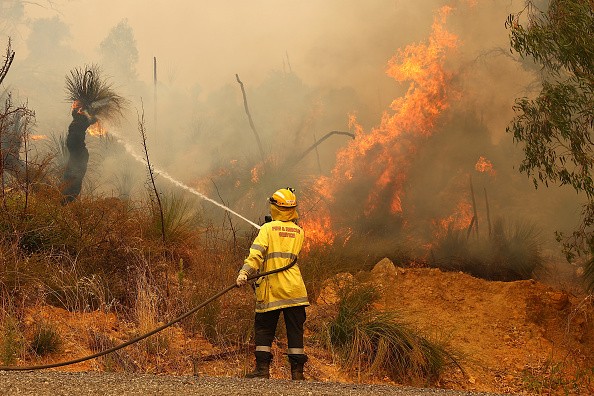While southern Australia had a rainy winter and a wet spring, northern Australia had the opposite experience. Bushfires raged over 120,000 square kilometers of southern savanna areas in October and November due to extreme fire conditions.

Australia's Extreme Fire Weather
Despite recent catastrophic fire outbreaks near major cities, most Australians have a limited understanding of the continent's fire ecology. However, as we reach the Pyrocene epoch, fire expertise is becoming more crucial as climate change worsens.
Arid Australia's fires are widespread, often mismanaged, frequently devastating, and under-reported. Improving their management participation is critical for both Traditional Owners and the continent's ecological health.
There were significant heat waves in Western Australia and the Northern Territory near the end of the year, and the rainy season started late this year. Bushfires flourished as a result of these favorable conditions, according to Science Alert.
Central Australia, on the other hand, has had unusual flooding rains, including the wettest November on record at Alice Springs. As the summer approaches, this results in unsafe fuel loads.
Water and fire are inextricably linked in the desert, both in space and time. Because fuel - in the form of plants - is very thick where water flows, fire burns there.
When a country isn't managed for fire, it cause disastrous results.The spread of a fire is also influenced by the occurrence of earlier fires. Large swaths of desert may amass high fuel loads, ready to ignite, if fire isn't used on a regular basis.
The research shows that over 400,000 square kilometers of central Australia burnt in only a few months in 2011, about twice the area of Victoria. It was one of Australia's greatest single fire incidents in recent memory, and it occurred during a rainy La Nina season in 2010-12.
Researchers Provide Insight into Fire Management
Indigenous Australians have effectively burnt landscapes to govern the country for thousands of years. The majority of flames are low-intensity or "cool," and do not burn significant regions. This creates a fine-scale mosaic of various plant kinds and fuel ages, which reduces the risk of big fires.
Researchers have gone back in time to get insight into how fires were managed in the past. This was done using aerial imagery acquired during missile testing at Woomera in South Australia in the 1940s and 1950s.
The aerial shot below, taken in 1953, shows a complex mosaic of burn patterns and ages, the consequence of Traditional Owners' fine-scale land management.
Fire regimes altered substantially once Indigenous peoples were displaced and traditional burning techniques were abandoned.
The average size of today's fires is several orders of magnitude larger than those started by Aboriginal people. Some mammalian and plant species have declined or become extinct as a result of the shift.

Wildfires in Desert
The huge deserts, like the rest of the continent, need careful management of fire. It may be tough to get people back on desert land to reestablish complicated fire mosaics, but it will be worthwhile for both the environment and Indigenous people.
Building capability among ranger groups and communities, overcoming legal and insurance barriers, and using creative means to apply "cool" fires on a near-continental scale are among the challenges. Indigenous ranger groups play a crucial part in this.
Desert firefighting is being supported by groups such as 10 Deserts, a collaboration of Indigenous and environmental organizations.
Related Article : Study Shows That World's Eight Most Impactful Wildfires Occurred in the Last Decade
For more news, updates about wildfires and similar topics don't forget to follow Nature World News!
© 2025 NatureWorldNews.com All rights reserved. Do not reproduce without permission.





